The following is an interview conducted when I was still working on my book Shimmering Images: A Handy Little Guide to Writing Memoir.
Wherever Lisa Dale Norton, travels she leaves a mighty impression with writers, teachers, and organizers. Her ability to transform personal journey and experience into written narrative, or workshop and classroom discussion is enormous. Everyone who works with her experiences a leap in one or another aspect of their writing ability.
Lisa got on the literary map in a big way, achieving national acclaim and favorable comparison to Annie Dillard and Terry Tempest Williams for her memoir, Hawk Flies Above: A Journey to the Sandhills. Since then, she’s taught at workshops and conferences throughout the country, read her work at countless bookstores and radio shows, and helped out everyone from neophyte writers to published authors. Now, she’s at work on Shimmering Images: A Handy Little Guide to Writing Memoir.
Q: Your specialty is first-person narrative non-fiction, also called memoir. Could you talk about how and why this particular genre resonates so deeply with the way your creative process works?
Lisa Dale Norton: I write first-person narrative nonfiction because I use writing as a way to find out what I 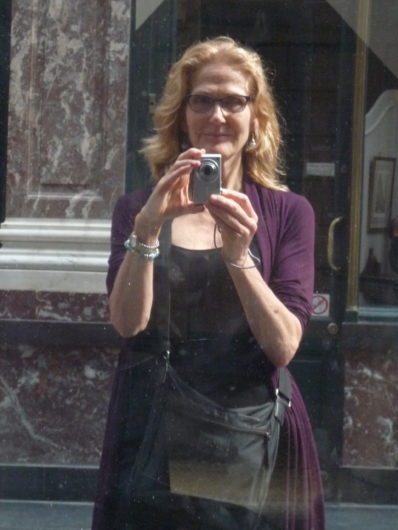 think and how I feel. It helps me sort out and make sense of my world. I am interested in understanding my experience. I am interested in the universal aspects of the individual experience, and in finding those through exploration, honesty, and compassion. That’s what it takes to write truly moving first-person narrative nonfiction.
think and how I feel. It helps me sort out and make sense of my world. I am interested in understanding my experience. I am interested in the universal aspects of the individual experience, and in finding those through exploration, honesty, and compassion. That’s what it takes to write truly moving first-person narrative nonfiction.
I suppose that response in part also answers the how of your question. By exploring in words my interior and exterior landscapes, I make sense of what can often seem like the chaotic flow of life. I story my life as I order the events, and because first-person narrative allows me to be the hero of my own stories, I am able to ferret out meaning in the random, make beauty from the horrific.
Q: What are three or four of the most important steps a young writer can take to insure that his/her creative process leads to finished works?
A: 1) Throw out your TV. TV script writing does not teach truths that resonate with heart resolutions. I also believe TV inculcates in young writers a lack of originality and a sense of hopelessness. If you want to be original, honest, and have something to say worth finishing, refuse to fill your mind with pablum.
2) Believe in yourself, your right to speak, and the validity of your viewpoints and opinions.
3) Put your butt in the chair and stay there until the work is done. There is no substitute for determination.
4) Avoid rewriting the first few pages. When they have been drafted once, set them aside and get on with the next few pages. You can, and will, go back in the end, when all the pages have been drafted, and craft the arc of the story. Just get through the entire story. Too many writers spend a lifetime massaging the first few pages.
Q: When you were writing Hawk Flies Above, how did ideas come to you and how did you keep yourself focused?
A: I write very intuitively, and I was not consciously working on themes and sub-themes. I had a place I loved, a story to tell, and the passion to finish the project. I also had an editor, in George Witte, who encouraged me to go deep and to tell the truth. As for the compilation of ideas: I did a vast quantity of research before ever writing the book. I spent a childhood in the Sandhills of Nebraska. I went back as a twenty-something to patch together my life in familiar territory, and then I went back again as a professor, with a grant in
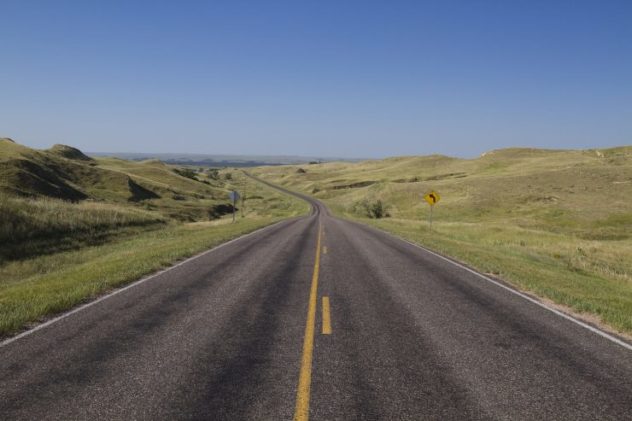
my pocket, to do formal research. On that last trip, I traveled thousands of miles over back roads interviewing people, taking copious notes and photographing everything that interested me. I walked, smelled, tasted, laughed and hung out with the people of the Hills. I read dozens of books about Sandhills history and Great Plains history and Nebraska history, and land use, and geology, and water. I kept an extensive card catalogue of facts and figures, and in the end I learned that material, so that when it came time to write, it was all there in my head, and I did not have to refer back to anything. I just knew it and it found its way naturally into what I had to say, into what I was passionate about.
Q: Yet you kept everything together in just a few themes.
A: I structured the book in three manageable arcs: Childhood, Young Adult, and Adult, you could say, and I stuck to material in each of those sections, more of less, that had to do with those periods in my life, although life can never be segmented clearly like that. I wrote shimmering images, as I call them, gathering the vivid incidents I remembered, and I wove them into essay-like chapters that had larger thematic concepts that underpinned them. These larger thematic concepts I discovered only as I worked on the material and let the stories mingle and ferment.
Q: You’re very particular and deliberate about both the choice and use of words. Is this something that runs within you during your early draft(s), or do you just let the thoughts stream through and get particular in later drafts and revisions?
A: I do both. When I was a younger writer I just let it flow and cleaned it up later. I wrote very messy first drafts and sloppy second drafts, and passable third drafts, and on and on. I am a woman of hundreds of drafts. As I have become more mature in my work, as I have passed through the apprenticeship, I have gotten to the place where I see instantly the things I would change later and I shape them before they even come out of my fingers and onto the keyboard, appearing as words on the screen. Later still, though, I hone them and shape them more, extending a metaphor, looking for just the right word. I can sit with a phrase for long minutes, or even overnight if it is required to find the right comparison, the perfect juxtaposition. It may come to me weeks later as I am driving, and I will go back then and fix the paragraph. I love language, and I believe it is most effective if I am patient enough to go deep, to push beyond clichés and first ideas, to take it to an elegant, taunt, fresh place. I love to do that. It’s like making music to me. I lose myself in the work; it is no longer work. It becomes direct connection to something beyond this world.
Q: You’re a master at the exploration of themes, especially the relationship between landscape, creativity, and the heart. Could you explain the creative and intellectual process of exploring themes – how to dive in, where to go, how to branch out in such a way that you can return with a piece of literature ready to write?
A: I love landscape, so I naturally draw parallels between the exterior landscape and my interior landscape. It seems perfectly natural to do this. I see prairie and my heart opens, I see into my soul, and the metaphors rise and present themselves to me. I see the silence of an alpine setting in snow and the stories of my past rise to greet the vision and the alchemy of art and desire and loss and love all converge and parallels simply present themselves to me. I gather them up like fallen apples under a tree and present them to you.
Q: You’ve come to writing from a music background. Why do you think so many writers are musically inclined, and why is it so beneficial for practicing writers to have a strong relationship with music, or art, or the performing arts?
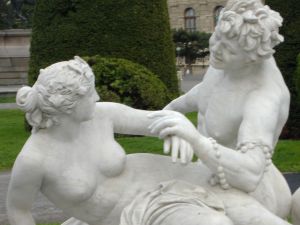
A: Writing is all about rhythm and pattern and melody line, harmony, counterpoint and meter. Some books are like symphonies, others are concertos, still others folk songs. There is so much similarity between the forms of music and the forms of written story that for one educated in music the parallels are immediate. When I think of the form of a story I am working on, I am often reminded of a piece of music I know; when I look for solutions in how a story needs to flow, I often look to music.
When I was a college student, I took years and years of music theory classes. I learned to analyze music on a variety of different levels. It was extremely hard work, next to the study of advanced math, I was told. Later, I used my understanding of music composition to write music criticism for newspapers and magazines. Only later did I begin to see the parallels between musical composition and the other arts, and specifically with writing.
My grad school experience in Iowa City was instrumental in this broadening of my arts education. My best friend then, and later my husband, Gene Dieken, thought so instinctively like an artist; he taught me to think that way, too. We talked about the arts and visited specialized libraries together, checking out books we browsed together later. We went to performances and compared works of art—paintings and photographs and music and dance, and we drew parallels and discussed the lives of artists. What I see now is that during that whole time, during my apprenticeship, I was learning about the fundamentals of how a work of art, any work of art, is composed—what to look for, what questions to ask.
I think the arts work together. If a writer wants to deepen his craft, he will school himself in dance or painting or sculpture or song, because ultimately one leads to the other, informs the other, helps the writer think like a craftsman and an artist, and opens the artist’s heart to inspiration.
Q: What prompted you to move over from your music background to writing as a career and a way of life?
A: I was in grad school and I was resisting specialization. I was supposed to be studying journalism, but much of my heart still resided in music. I kept studying voice, and my teacher suggested I try out for an operatic role. I was selected as understudy for a lead. I had never had such pressure as a singer before and that expectation, along with the stress of performing in two different departments—Journalism and Music—was just too much for me. I fell ill with a series of bronchial and lung ailments, and finally after missing weeks of school, my advisor in the Journalism School, dear John Bennett called me and said, “You have to choose. ” I knew he was right, so as I lie in my bed in my room in the house where I lived in Coralville, Iowa, outside Iowa City, I worked through it; I made my choice: writing, language, story, words, and I threw myself into it and never looked back. I knew I wanted to be good, very good, at something, and if I was going to choose, then I had to be serious about it and make every act count. I took all my passion for music and I wrapped it around the study of writing. I apprenticed myself to the work, and I vowed I would be good.
I also think on a deeper level I knew I was more gifted as a writer than as a singer—and I was quite gifted as a singer —but I think I knew I could never compete in that world and climb to the level of excellence and success that I demanded of myself, in the same way I believed I could in the world of ideas and stories and language. So I turned toward one, and away from the other, and while I have missed music and been sad about it, I have loved words and integrated each day into my work with words my love of music.
Q: What is the difference between writing as a career/job, and writing as a way of life?
A: For me, writing is a passion. It infuses everything I do, think and feel. It drives the choices I make for the videos I rent. It follows me to bookstores, to the fitness center; it haunts me in the grocery aisle, in the forest. I am a woman and an artist who lives and breathes story and ideas and concepts and language, and I revel in the taste of a good book and the smell of a newspaper and the excitement of an intellectual discussion. To me writing as a way of life is all about these things, living, breathing, sleeping, thinking, feeling story and words and language and ideas and the rhythm and melody of emotion laced into a written form that evokes in readers intense joy and pathos and deep heart-gripping communion. Writing as a career/job is something you do to pay the bills, or so it seems to me. The heart is not engaged in the same way.
Q: One critical factor of writing that is evident in your work is “diving deep”—not digressing from a hard truth when it presents itself. You’re very skilled at both teaching this and practicing this in your own work.
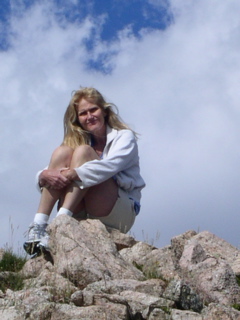
A: Courage is the word that first comes to mind. Courage and trust. A writer must have the courage to go to the place inside himself where the best material lies, the place you instinctively shy away from because it is laden with landmines. You have to be strong enough to go there and walk through the minefield and bring back the treasure that waits. And you have to trust that you will be okay on the journey. Where one gets those two qualities, I can only speculate. I can tell you I learned them from my mother and my father who were rebels, and who would not accept quitting as an option. Hence, I was always stubborn and fiercely independent and rebellious, and while those qualities drove teachers crazy when I was a kid—they tried diligently to break me of my “bad” behavior—I remained true to my star. Those very qualities, of stubbornness and independence and rebelliousness, made me courageous and taught me to trust myself on the journey to the place where all good material waits.
Q: What can writers and readers do to crack open their deepest heart, their deepest secrets?
A: 1) Find a good teacher; 2) commit to your truth; 3) defy the system; 4) and then leap. As I used to say to a friend: the leap into the unknown, the place of your deepest secrets, always feels like free fall into the Grand Canyon. Later, you realize it was rather more like stepping off a curb in the city.
Q: Another area on which you focus greatly is memory. We have intellectual and heart memory, but then we have cellular memory and cerebrospinal memory. In other words, full-body memory and then some. How does memory converge with the present moment in the creative process for you, and how can writers more greatly access their memory?
A: The present moment hardly exists without the presence of memory, because everything we do, see, taste, hear, smell, and feel evokes memories of other things we have done, seen, tasted, heard, smelled, and felt, so that our present moment becomes a dance between the past and the present. It’s instant and constant. Watch how you move through your day: An act in the moment leads to a memory, leads to a choice, leads to a new thought, leads to a memory. Most of what we live each breathing moment would mean nothing to us if we did not have the past to bounce it off of. Context is everything. Memory is everything. The only time we truly separate from past, or memory, is when we meditate and separate totally from this plain of living, focus so thoroughly on the movement of the breath, in and out, that we lose touch with the dance of present awareness and past context.
What this means for the writer, specifically the writer of first-person narrative nonfiction, is that if you can really tap into that dance between present moment and past context you can begin to understand the form of narrative nonfiction, the way in which you must structure the writing to have it make meaning for the reader. By tapping into the connections the mind and body make between new and old, the sensual experience in the moment and the remembered meaning of similar sensual moments in the past, you will see how meaning is made. That is how I use memory. I watch what I think and I listen to the connections of heart and mind, and then I follow them to the place where it is hard to go and I get the treasure and I come back with it, and I interpret what it means to me, given my past and my memories, my context and my heart issues, and then I work to make it bigger, universal, so it means something for other people, too.
I teach writers of first-person narrative nonfiction to access memory through a variety of techniques, but a simple one anyone can use is what I lump under the category of research, a dry-sounding word that often turns writers off, but then I go a step farther, and it always sounds more tantalizing. I advocate being a pack rat and compiling a vast archive, and using that archive as the genesis of story. Letters and mementoes, old e-mails and photographs, report cards, high school annuals, college newspapers, and family heirlooms. “Keep your stuff,” I say, because in that stuff resides memory, and in that memory resides story.
Q: You’re both a great teacher and a great writer. This is not as common as it might seem. How do you draw from your personal writing experience to teach?
A: I translate directly from my experience into what I teach. I speak most authoritatively from experience, so I find a way to explain what I do and how to do that. Theory I derive only from experience, not from something outside myself that I do not understand, something I parrot but have not lived. I may read all sorts of theoretical texts, but if I have not understood and applied that theory, translated and synthesized it, then I do not use it as a teacher. Only when I have done that does it find its way into my teaching, and then always in some much more low-key, perkier form.
I guess you could say I believe in experiential teaching. I learn, and then I point. I learn, and then I listen and ask questions. I learn, and then I give hints, and then I just get out of the way.
My greatest moments of satisfaction as a teacher have come when I have seen in the faces of my students split-second recognition, when they got it, in their own language, in their own way. And when I have made them laugh and forget how serious we all are. Also when students have written me years later and told me what a class meant to them, how it changed their life. I get a lot of that. It makes me smile and usually cry.
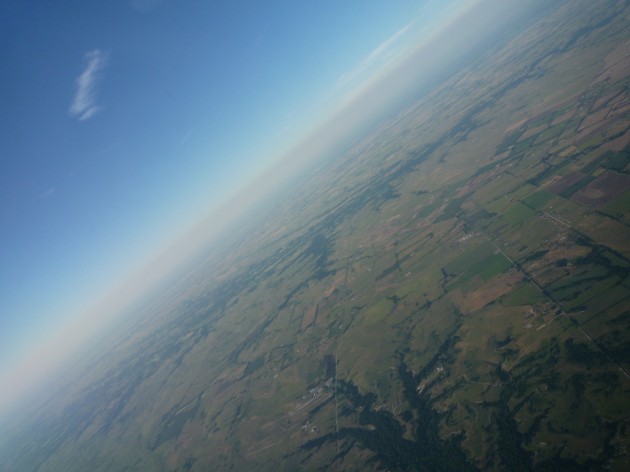
Q: When you explore a landscape, what do you see?
A: I see the color of the light. I see the angle of the light. I see the birds or absence of birds, the grasses and trees and the mosses and lichens. I see every other place I have explored. I see comparisons. I see what the land evokes in my heart. I see all the things I do not know, the list in my head of what I have to learn. I see the historical context of the place, native habitation, white man movement. I see the dirt and gravel, the rocks, the animal tracks. I see scat, and the last traces of man. I see the music of the wind in the trees, the movement of water across the land. I see the effects of sun. I see the geologic history and the little tiny speck that I am moving through the landscape, and then I see God in everything, and then I get very quiet and I see me in God.
